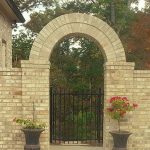a) Igneous stones
These stones are obtained from igneous rocks, formed from the cooling and solidification of magma generated within the Earth at high temperatures during volcanic activity.
They are generally used for purposes that require strength and durability, such as kerbstones, countertops, floorings, and breakwaters. The igneous stone ranges from very soft rocks such as pumice and scoria to somewhat harder rocks such as tuff and hard rocks such as granite and basalt.
b) Sedimentary stones
They are obtained from sedimentary rocks that are formed by accumulation and cementation of mineral grains (sediments) transported by wind, water or ice to a basin or by precipitation at a site. There are mainly two types of sedimentary stones used in masonry work, limestone and sandstone. One of the sedimentary rocks is Limestone that is composed largely of the minerals calcite and aragonite, which are different crystal forms of calcium carbonate.
Limestone is the main construction material and used in various fields such as a building material, as aggregate for the base of roads, as white pigment or filler in products such as toothpaste or paints, and as a chemical feedstock.
On the other hand, sandstone is an elastic sedimentary rock composed mainly of sand-sized minerals (mostly quartz and/or feldspar) or rock grains. It is relatively soft, making it easy to change as the required shape.
Typically used as flooring or paving material, it has also been used for artistic purposes to create ornamental fountains and statues.
c) Metamorphic stones
They are obtained from metamorphic rocks, which are pre-existing rocks that have been altered by great heat and/or pressure or by chemical conditions. They have traditionally been used for carving statues, and as facing in many Byzantine and Renaissance Italian buildings. Slate and marble are metamorphic stones commonly used in the building industry.
Slates are typically used for flooring, roofing, and countertops whereas marbles are suitable for wall-cladding, roofing, flooring, and all other interior and exterior applications.



Comments are closed